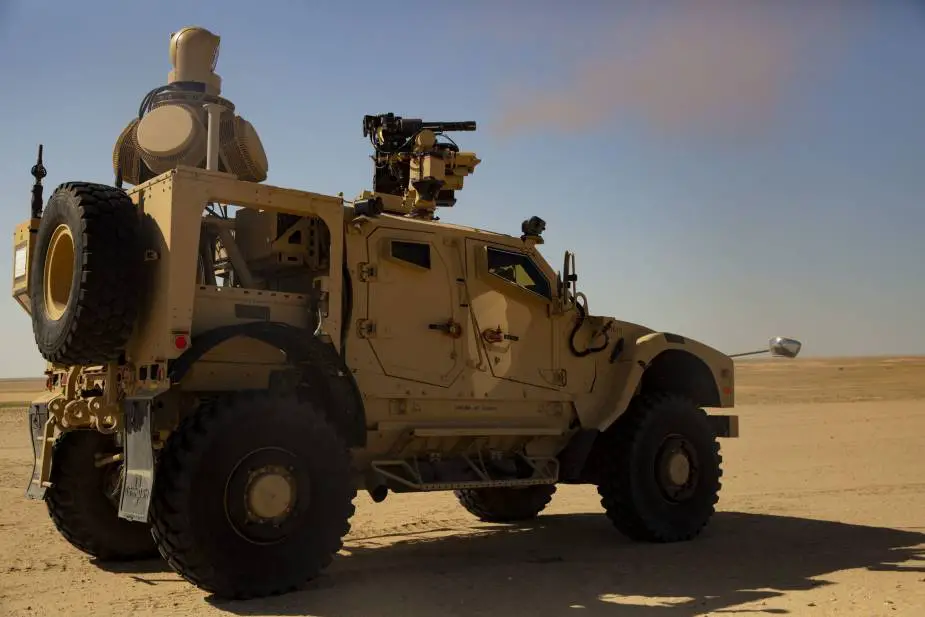As formulated by the Missile Defense Advocacy Alliance (MDAA), the Marine Air Defense Integrated System (MADIS) is the Marine Corps’ new push for modernizing its Ground-Based Air Defense capabilities. It is part of the Corps plan to upgrade their two active Low Altitude Air Defense (LAAD) battalions, which currently rely on dismounted Stinger missiles and radar equipment transported in two AM General M1114 Humvees per section.
Follow Army Recognition on Google News at this link

A C-UAS solution is fielded by the U.S. Marines under the MADIS Mk2 program (Picture source: USMC/Twitter account of Franck3E)
Since the Marine Corps divested itself of all their Avenger Systems in the mid-2000s, MDAA recalls, the Marines have been without a dedicated mobile firing platform to protect the maneuver force. In 2013 at the beginning of the fight against ISIS, the Marine Corps noticed the growing proliferation of cheap commercial drones and a gap in the ability to counter those systems. At the same time, the U.S. began to redirect itself toward near-peer competition against China and Russia.
The MADIS system relies on two vehicles per section working in a complementary pair: the MADIS Mk1 and Mk2. The MADIS Mk1 will be responsible for primarily neutralizing fixed and rotary-wing aircraft. The Mk2 will fulfill the Counter-Unmanned Aircraft System (C-UAS) mission, while also providing radar and C2 for the pair. The Marine corps also has the Light MADIS (LMADIS), which hosts the radar and EW suite on a Polaris MRZR. The LMADIS served as a testbed and interim C-UAS solution before the fielding of the MADIS Mk1 and Mk2. The LMADIS is still in operational use with Marine Corps LAAD battalions.
Force Design 2030, the Marine Corps plan for the future force, lays out a plan for distributed forward forces inside the Chinese weapons engagement zone (WEZ) aboard bases in the first Pacific island chain. The current Advanced Man-Portable Air Defense (A-MANPADS) systems alone cannot provide the proper defense for the infantry and artillery marines on these islands. With MADIS, the Marine Corps will be able to provide a more layered and integrated air defense umbrella that can detect, track, identify, and defeat aerial threats in order to protect the long-range precision fires dispersed throughout the Pacific, MDAA concludes.














